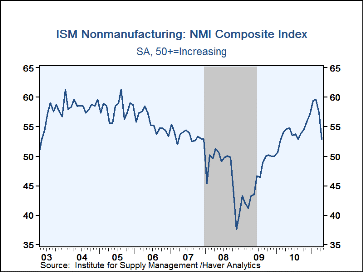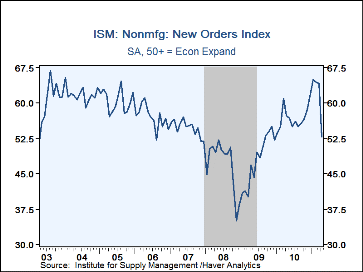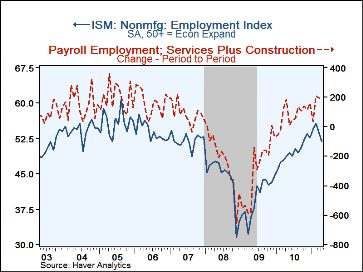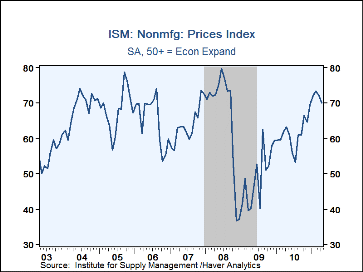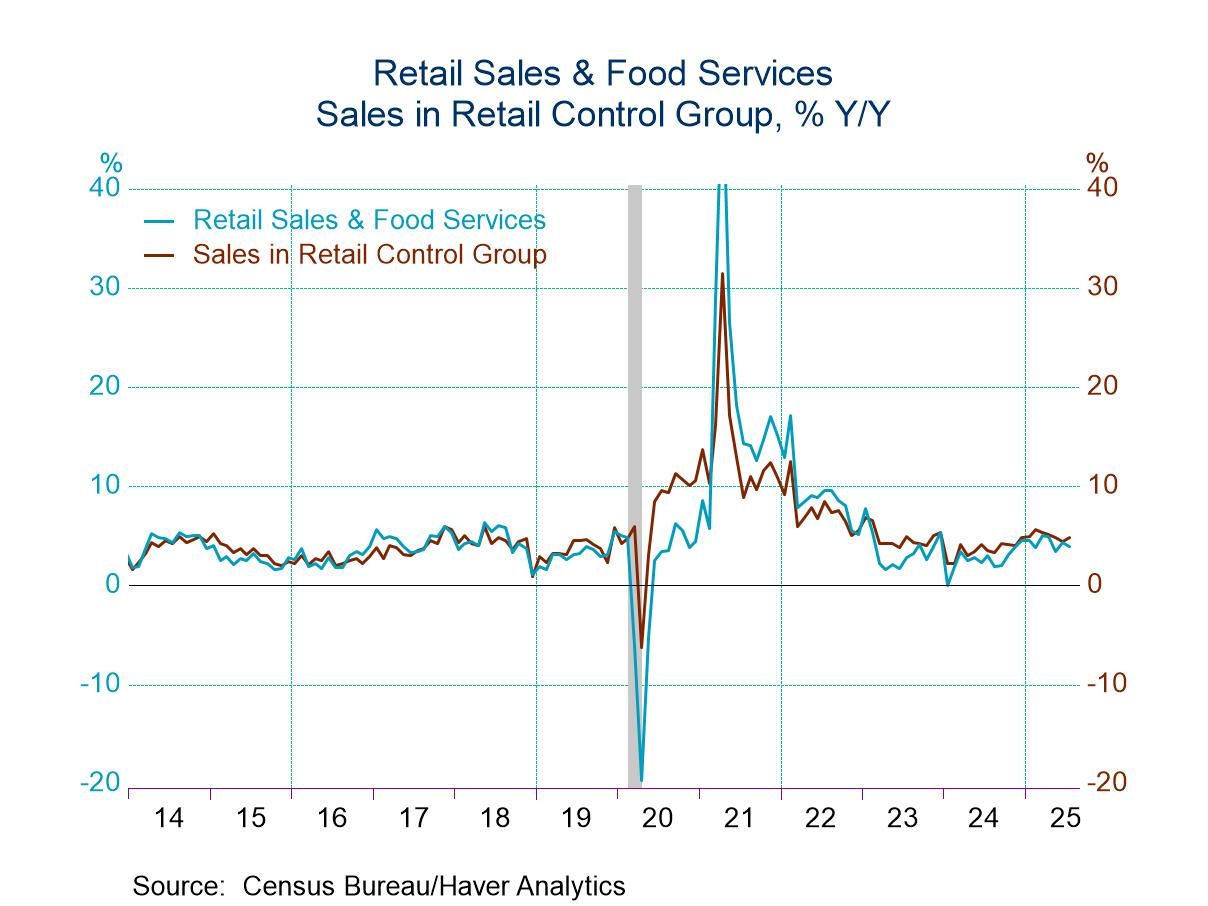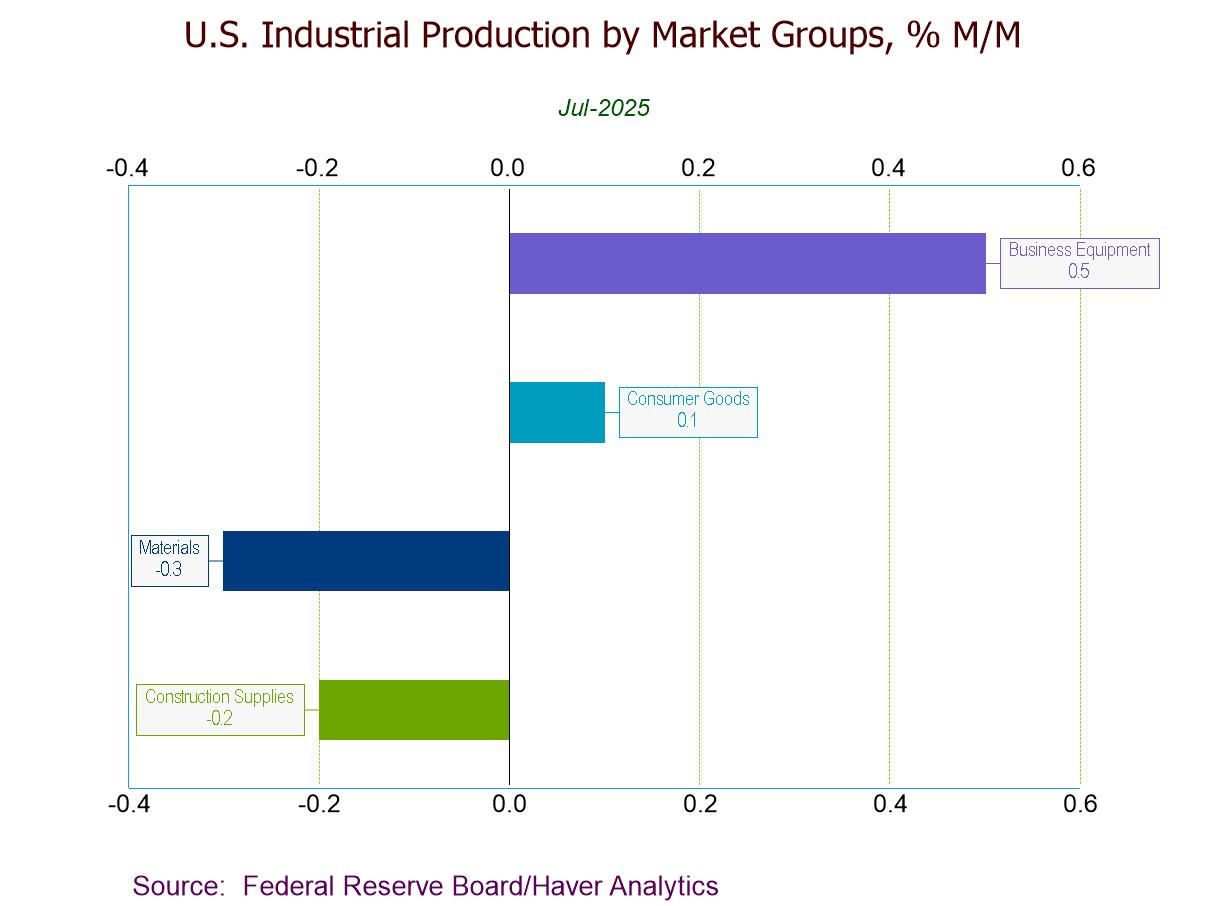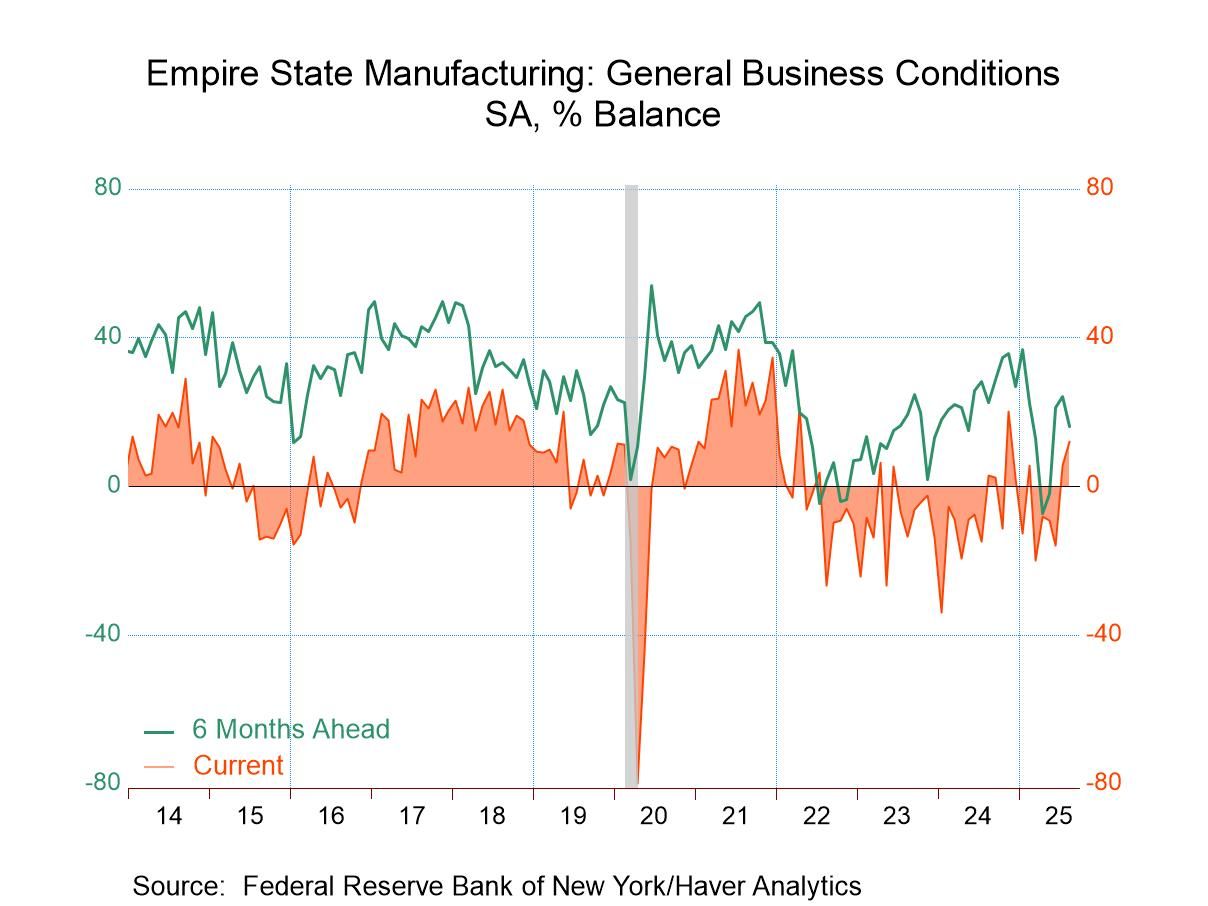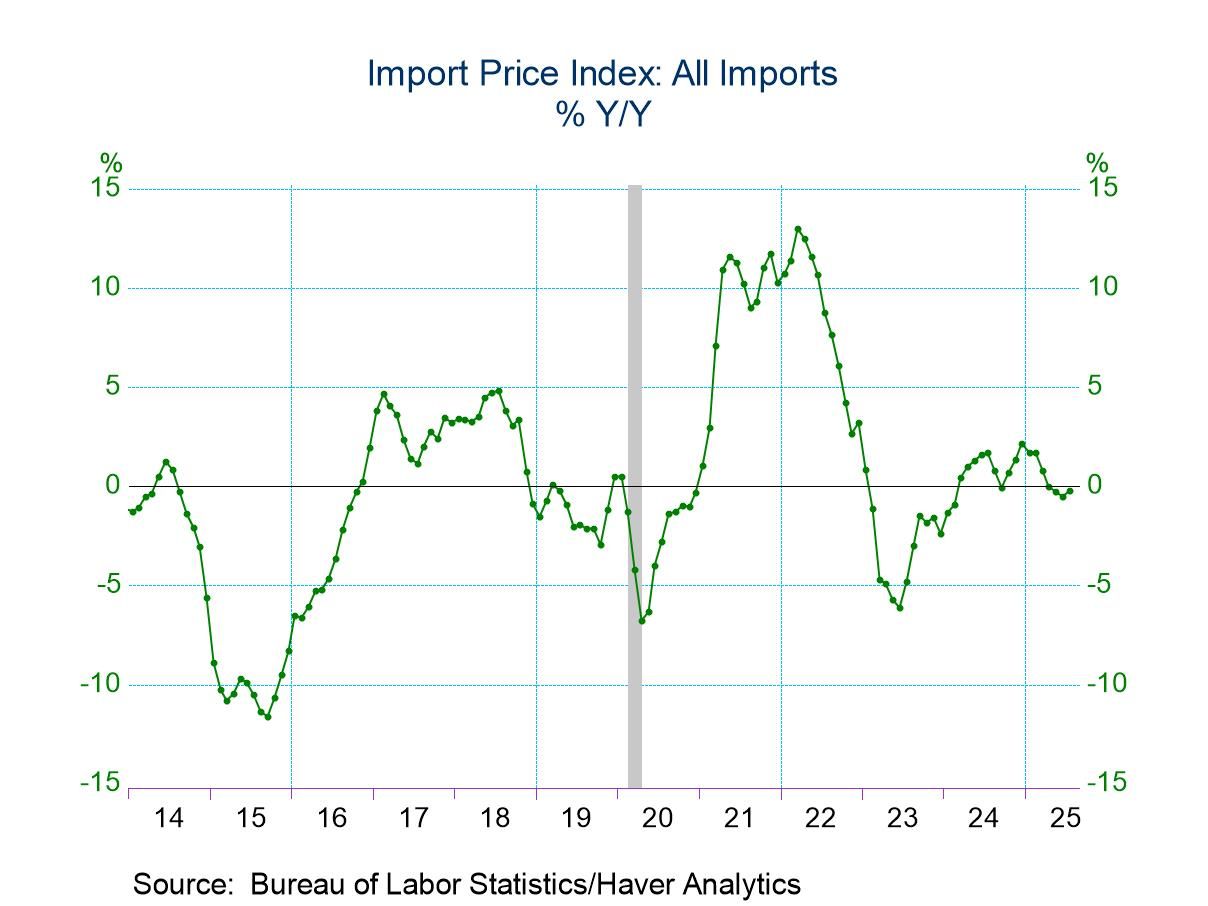 Global| May 04 2011
Global| May 04 2011U.S. ISM Nonmanufacturing Index Declines Further
by:Tom Moeller
|in:Economy in Brief
Summary
Growth in U.S. nonmanufacturing activity continued to slow last month. The April Composite Index for the service and construction sectors from the Institute for Supply Management (ISM) fell to 52.8 from 57.3 in March. The latest was [...]
Growth in U.S. nonmanufacturing activity continued to slow last month. The April Composite Index for the service and construction sectors from the Institute for Supply Management (ISM) fell to 52.8 from 57.3 in March. The latest was the lowest level since February 2010 and fell short of Consensus expectations for 57.5. Since the series' inception in 1997 there has been a 71% correlation between the level of the nonmanufacturing composite index and the q/q change in real GDP for the services and the construction sectors.
ISM Index component declines were widespread last month. The largest drop was the new orders series to 52.7 from 64.1. The business activity index also fell sharply to 53.7, its lowest since January of last year. The employment series also fell sharply to 51.9. Since the series' inception in 1997 there has been an 84% correlation between the level of the ISM nonmanufacturing employment index and the m/m change in payroll employment in the service-producing plus the construction industries. The supplier deliveries series posted a moderate increase to 53.0, indicating slower delivery speeds.
Pricing power eased again and the index slipped m/m to 70.1 but it still was near the cycle high. Fifty seven percent of respondents reported higher prices and just two percent reported them lower. Since inception ten years ago, there has been a 65% correlation between the price index and the q/q change in the GDP services chain price index.
Beginning with the January 2008 Nonmanufacturing Report On Business ®, the composite index is calculated as an indication of overall economic conditions for the non-manufacturing sector. It is a composite index based on the diffusion indices of four of the indicators (business activity, new orders, employment and supplier deliveries) with equal weights.
The ISM data are available in Haver's USECON database. The expectations figure from ACTION ECONOMICS is in the AS1REPNA database.
| ISM Nonmanufacturing Survey | Apr | Mar | Feb | Apr'10 | 2010 | 2009 | 2008 |
|---|---|---|---|---|---|---|---|
| Composite Index | 52.8 | 57.3 | 59.7 | 54.6 | 54.0 | 46.3 | 47.3 |
| Business Activity | 53.7 | 59.7 | 66.9 | 58.9 | 57.4 | 48.1 | 47.5 |
| New Orders | 52.7 | 64.1 | 64.4 | 57.3 | 56.8 | 48.0 | 47.0 |
| Employment | 51.9 | 53.7 | 55.6 | 48.7 | 49.8 | 40.0 | 43.7 |
| Supplier Deliveries (NSA) | 53.0 | 51.5 | 52.0 | 53.5 | 52.2 | 49.0 | 51.1 |
| Prices Index | 70.1 | 72.1 | 73.3 | 63.1 | 61.4 | 49.4 | 66.1 |
Tom Moeller
AuthorMore in Author Profile »Prior to joining Haver Analytics in 2000, Mr. Moeller worked as the Economist at Chancellor Capital Management from 1985 to 1999. There, he developed comprehensive economic forecasts and interpreted economic data for equity and fixed income portfolio managers. Also at Chancellor, Mr. Moeller worked as an equity analyst and was responsible for researching and rating companies in the economically sensitive automobile and housing industries for investment in Chancellor’s equity portfolio. Prior to joining Chancellor, Mr. Moeller was an Economist at Citibank from 1979 to 1984. He also analyzed pricing behavior in the metals industry for the Council on Wage and Price Stability in Washington, D.C. In 1999, Mr. Moeller received the award for most accurate forecast from the Forecasters' Club of New York. From 1990 to 1992 he was President of the New York Association for Business Economists. Mr. Moeller earned an M.B.A. in Finance from Fordham University, where he graduated in 1987. He holds a Bachelor of Arts in Economics from George Washington University.


